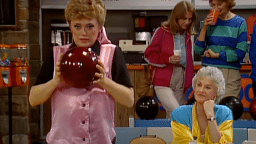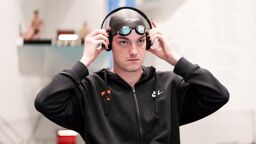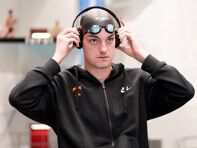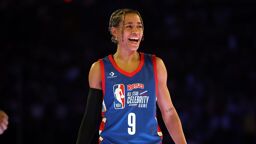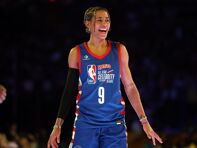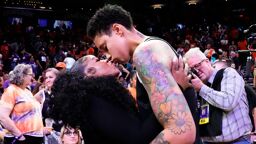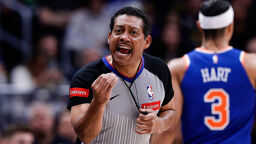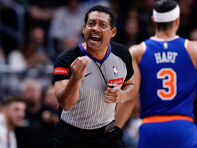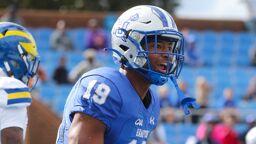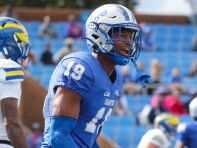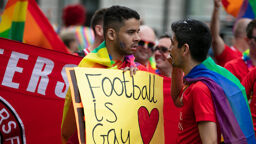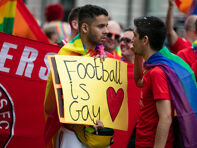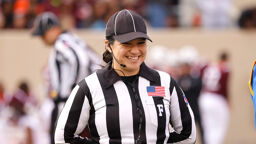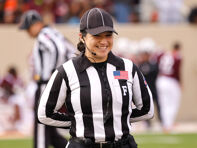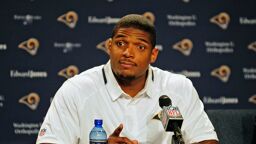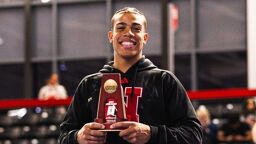The increased use of using fashion and glamor to market women's college basketball has raised the issue again of homophobia in the sport. Jayda Evans, writing for the Seattle Times basketball blog, does a terrific job in laying out the trend and tying it into homophobia by presenting female players as heterosexual lust objects rather than athletes. She makes her case far more detailed and nuanced than I just did and it's worth the read.
Homophobia has a choke hold on women’s sports in general. How it’s used against each other in recruiting, tagging programs as full of lesbians, and how schools/coaches over feminize themselves to not appear lesbian. All under the “innocent” veil of wanting to show women athletes can be “powerful, beautiful, strong and accomplished.” Or, to put it more simply, heterosexual, too.
The increased use of using fashion and glamor to market women’s college basketball has raised the issue again of homophobia in the sport. Jayda Evans, writing for the Seattle Times basketball blog, does a terrific job in laying out the trend and tying it into homophobia by presenting female players as heterosexual lust objects rather than athletes. She makes her case far more detailed and nuanced than I just did and it’s worth the read.
Homophobia has a choke hold on women’s sports in general. How it’s used against each other in recruiting, tagging programs as full of lesbians, and how schools/coaches over feminize themselves to not appear lesbian. All under the “innocent” veil of wanting to show women athletes can be “powerful, beautiful, strong and accomplished.” Or, to put it more simply, heterosexual, too.
The WNBA is even guilty of this move, holding beauty sessions at rookie orientation – even when the league made cuts in hosting the orientation immediately after the draft last year.
Evans was writing about “Training Rules,” the documentary that details the intense homophobia of former Penn State women’s coach Rene Portland. But she was also discussing the marketing done by the programs at Florida State and Texas A&M.
Florida State’s women’s basketball website is all about glamor, with a basketball thrown in as a prop. “Confidence. Strength. Beauty. We’ve got it all,” says a tease on the home page. Writes Evans:
Players are depicted in silky, metallic-colored, sleeveless dresses either stepping out of a limo or leaning beside one in artistic glam shots. There’s a photo gallery and video for everyone. …
I can understand this defense of the site. And it’s not like male teams haven’t been gussied up in the past or done creative photo shoots at places like construction sites because they’re “going to work this season.” I remember one year at Arizona under coach Lute Olson, the starters were put in tuxedos for a basic photo on some steps on campus.
I guess if you’re doing an updated, feminine version of that look, there would be dresses, makeup and limos. We are in the generation of bling-bling.
Yet, the jarring difference is Arizona’s was a poster, not the main approach to introduce the team. What FSU has blatantly done is sexualized basketball.
Even worse is a poster for the Texas A&M team that features Coach Gary Blair adjusting his tie while surrounded by his players dressed in low-cut dresses. Blair looks vaguely pimp-like and one would guess the school has a clothing contract with Donna Karan instead of Nike.
Jezebel picked up Evan’s column and there is an interesting reader discussion of people both supporting and defending the photos. I understand that creativity is needed to market sports, especially for women, who always have to fight for attention. But the emphasis on sex appeal rather than athletic ability does strike me as the wrong approach.
Nothing I saw smacks of overt homophobia. However, this seems more of the unconscious variety, where women have to look sexy in a hetero way as opposed to the stereotype of the “dyke jock” (the LPGA also does this) as a way to sell the sport. This is similar to negative recruiting in the women’s game, where a coach will talk about his or her opposite-sex spouse and children that sends the signal that the recruit need not fear playing for a lesbian.
I am curious as to how others see these marketing campaigns.






